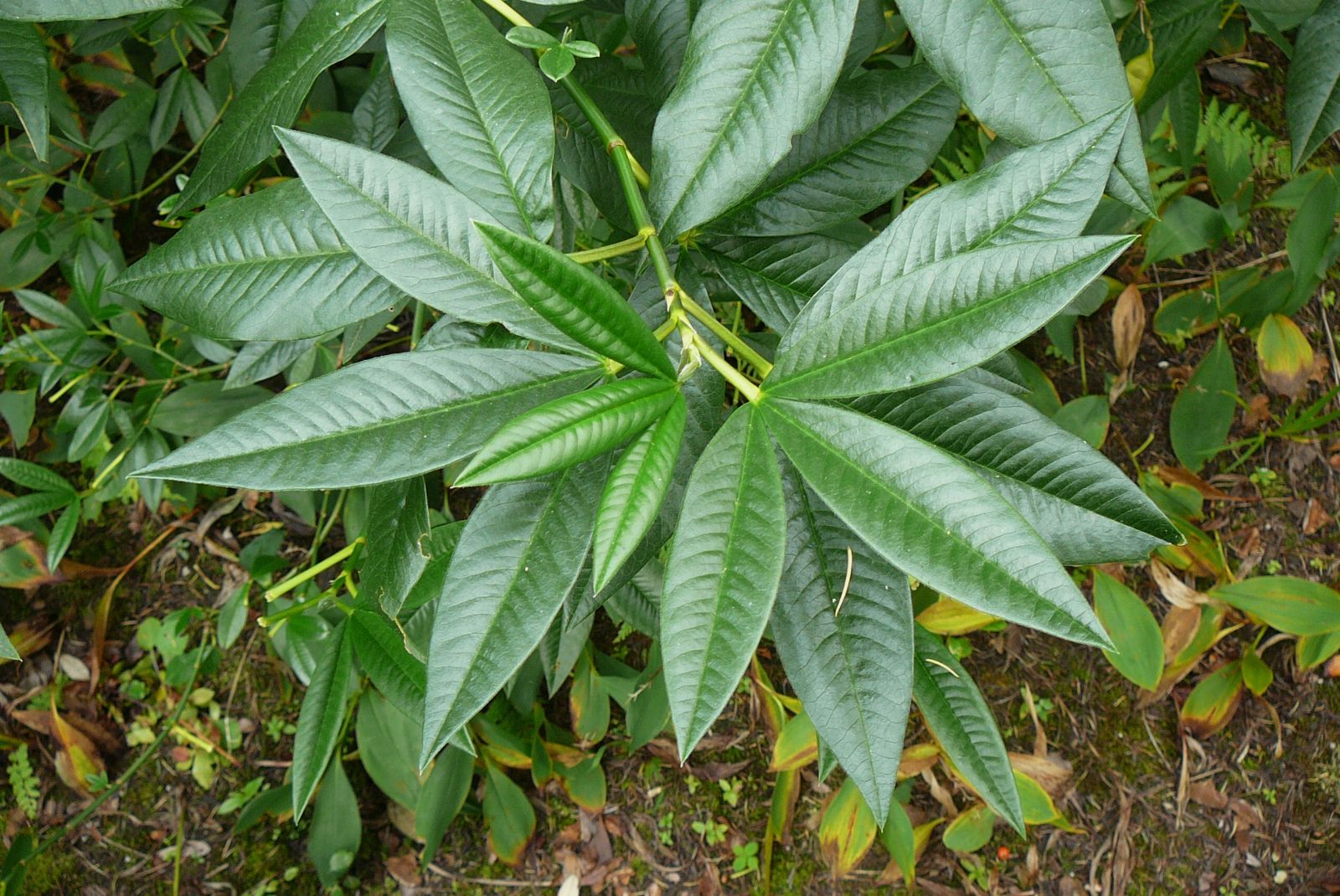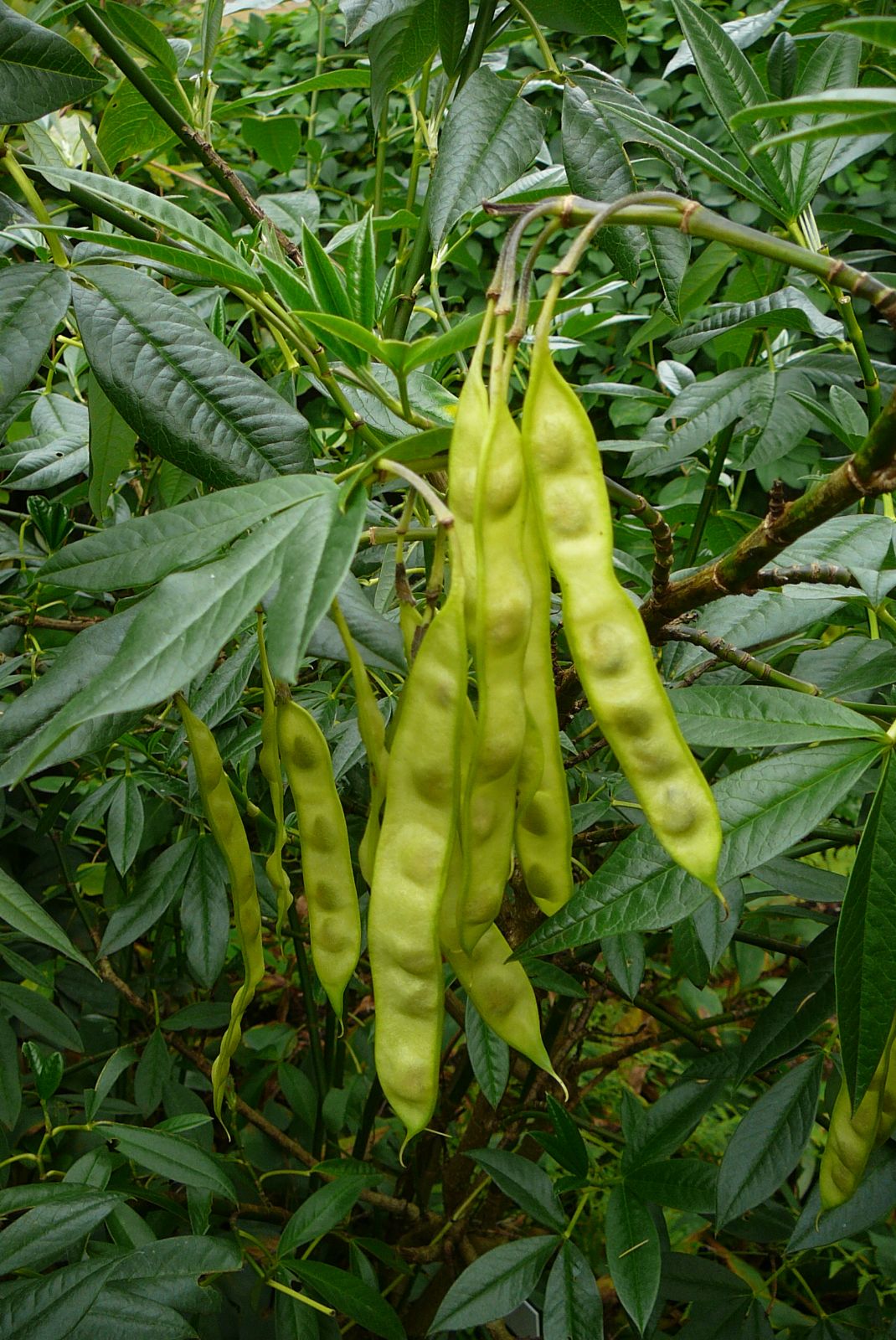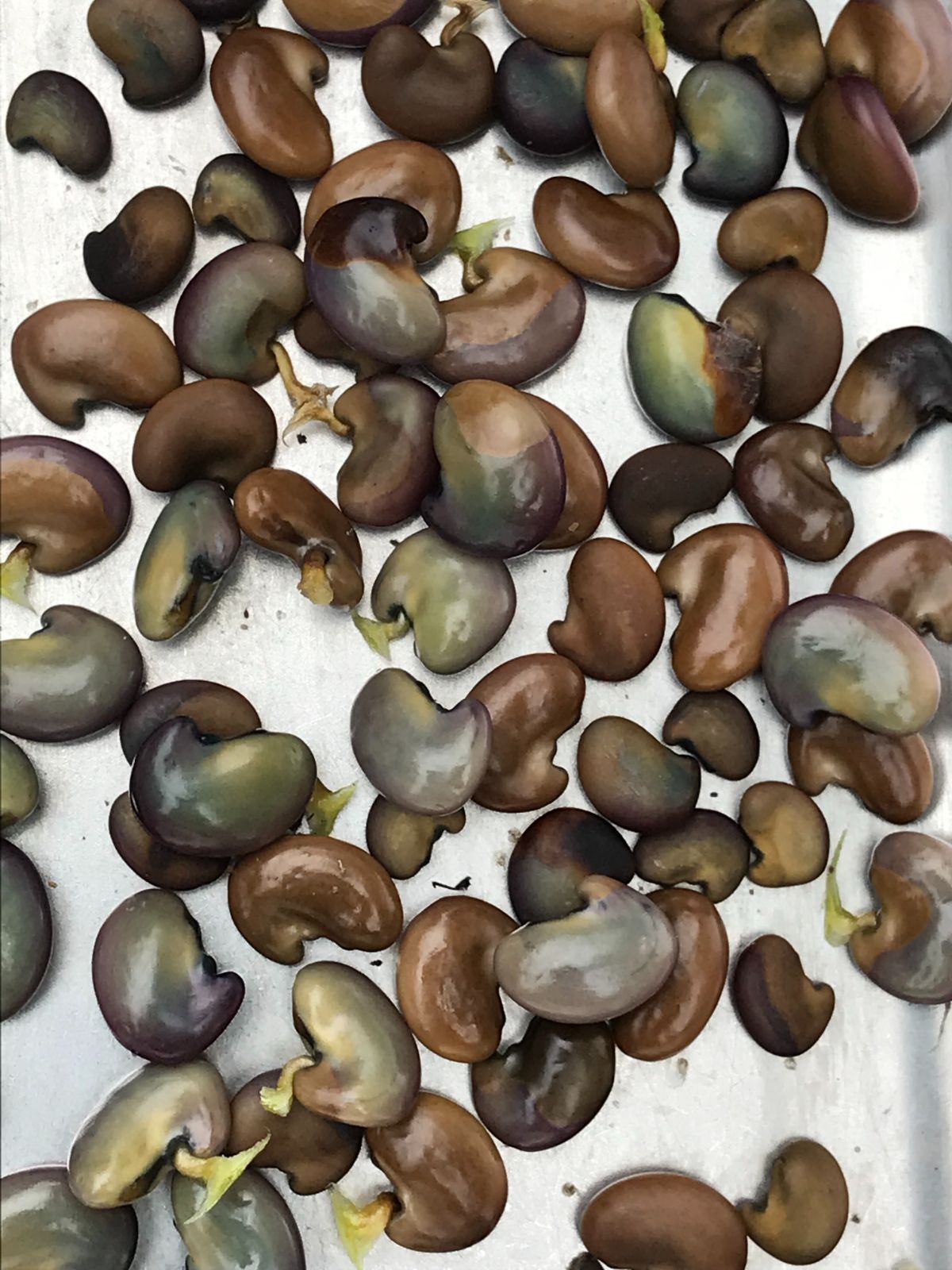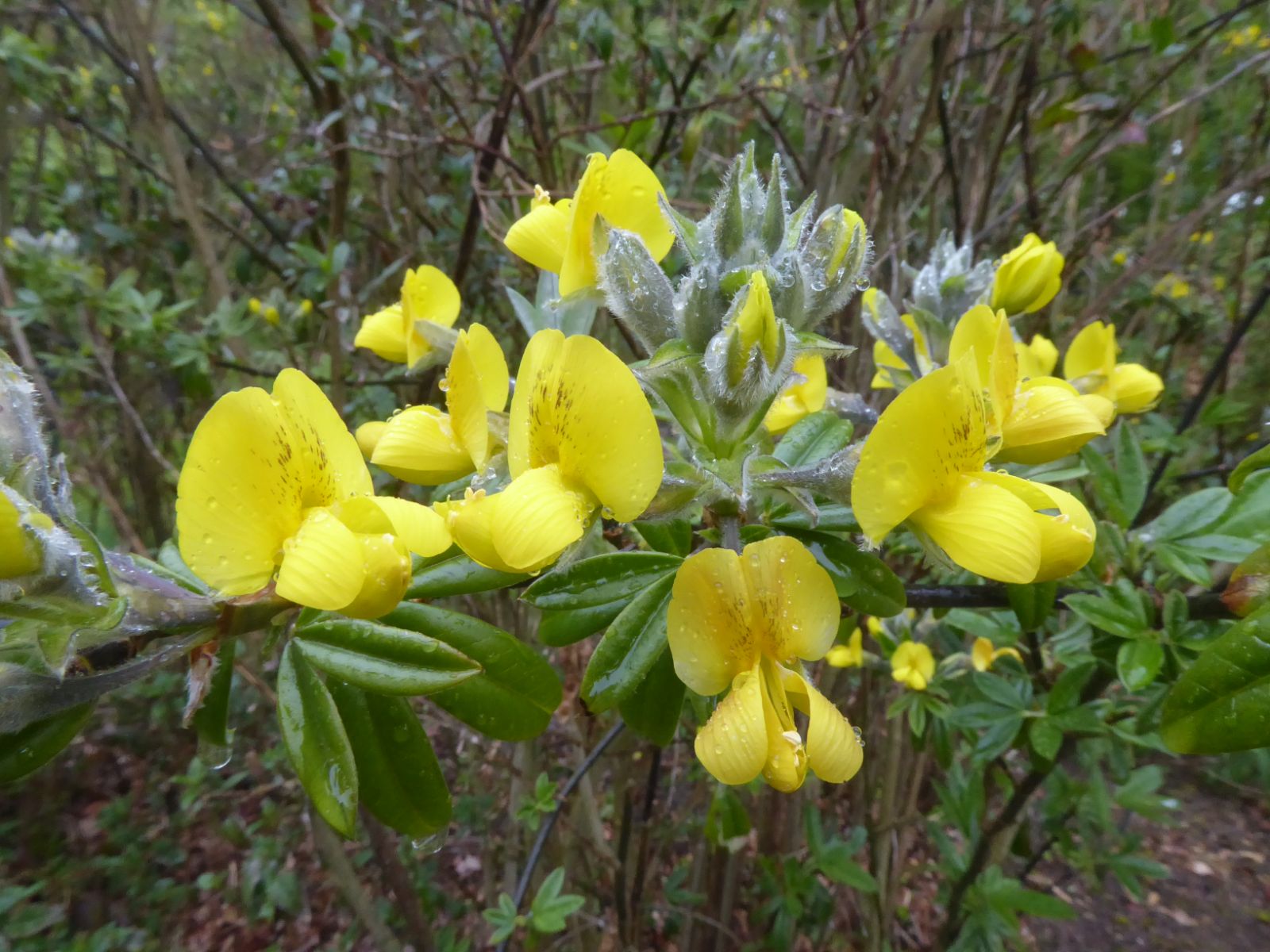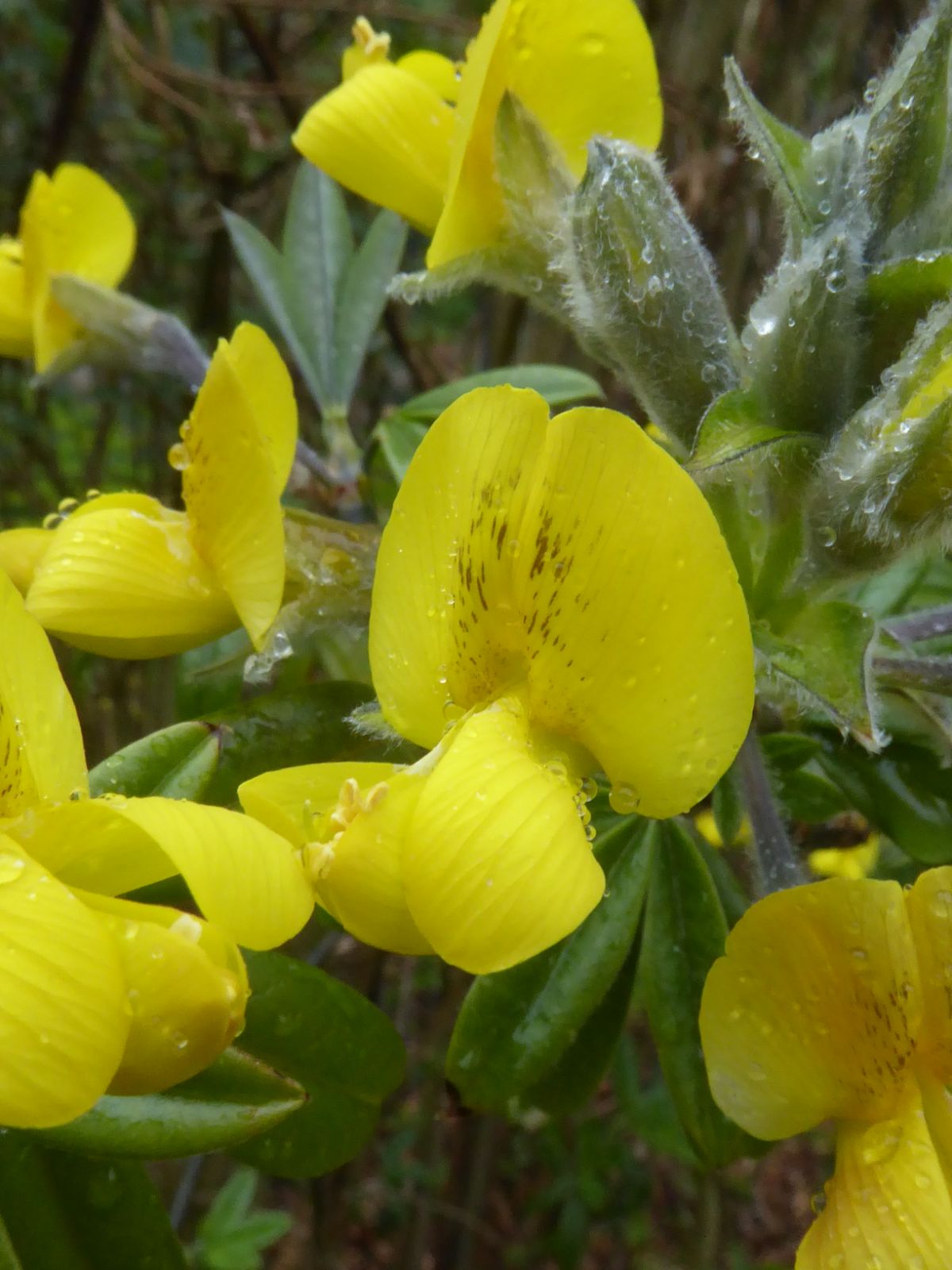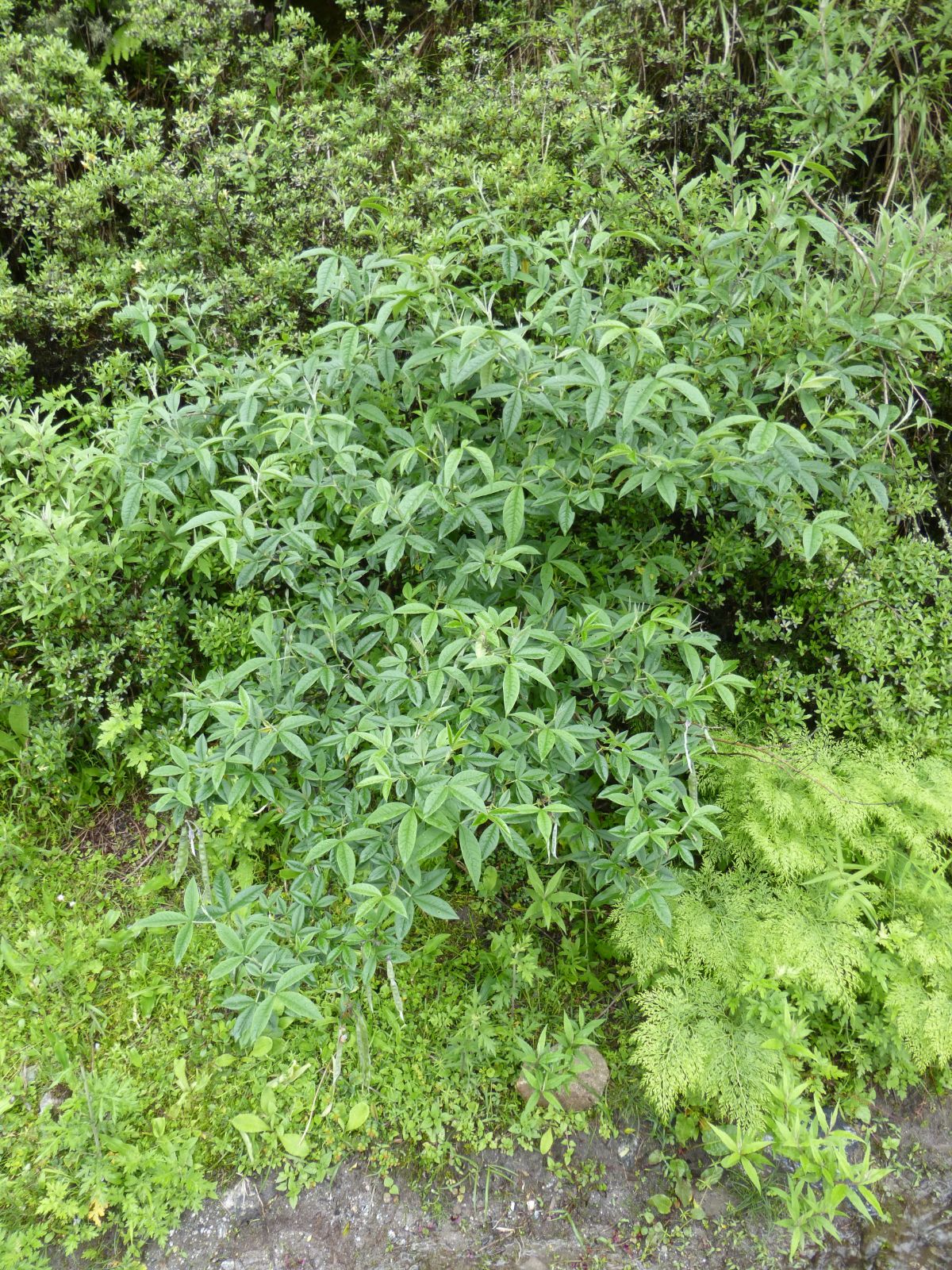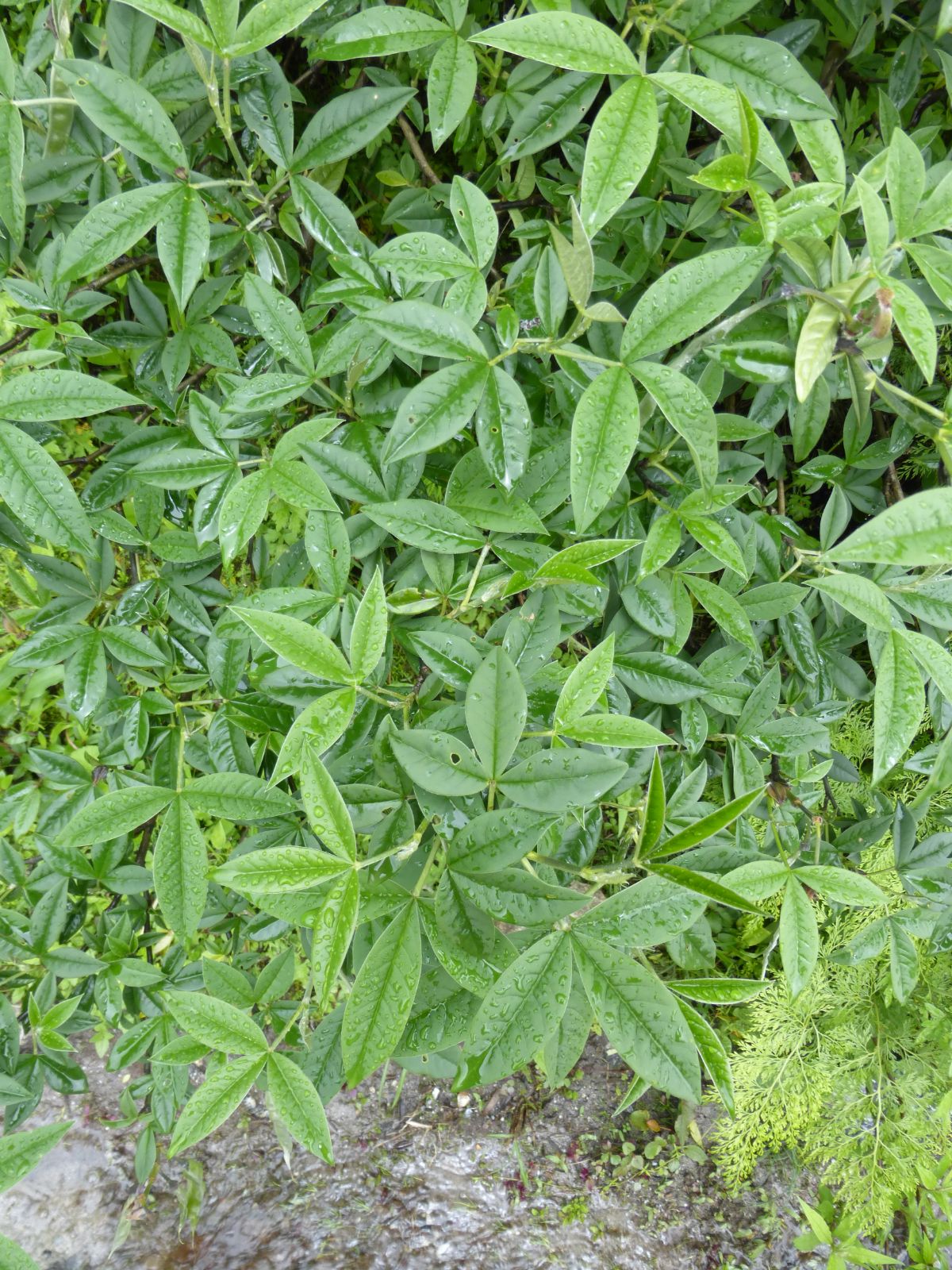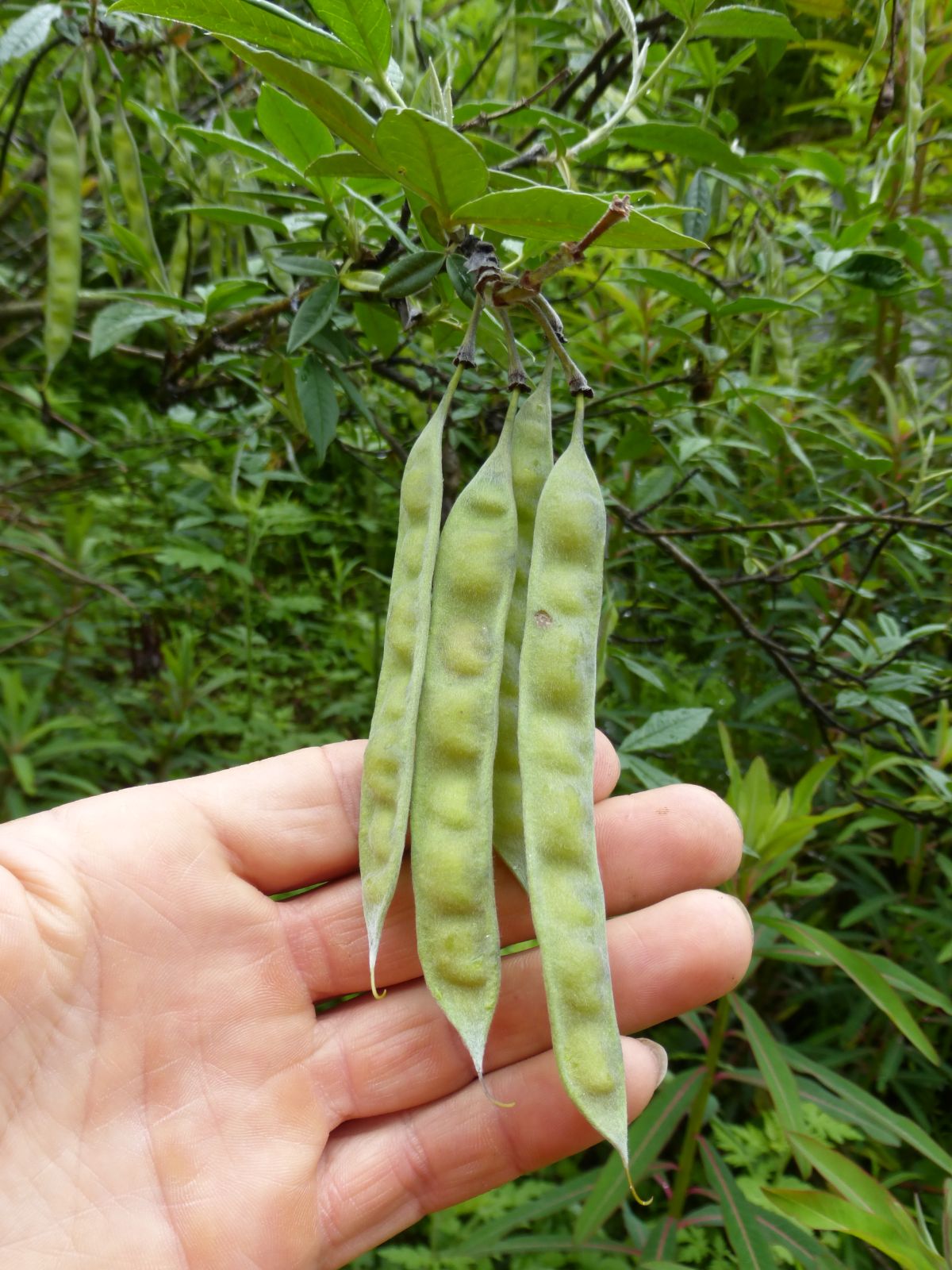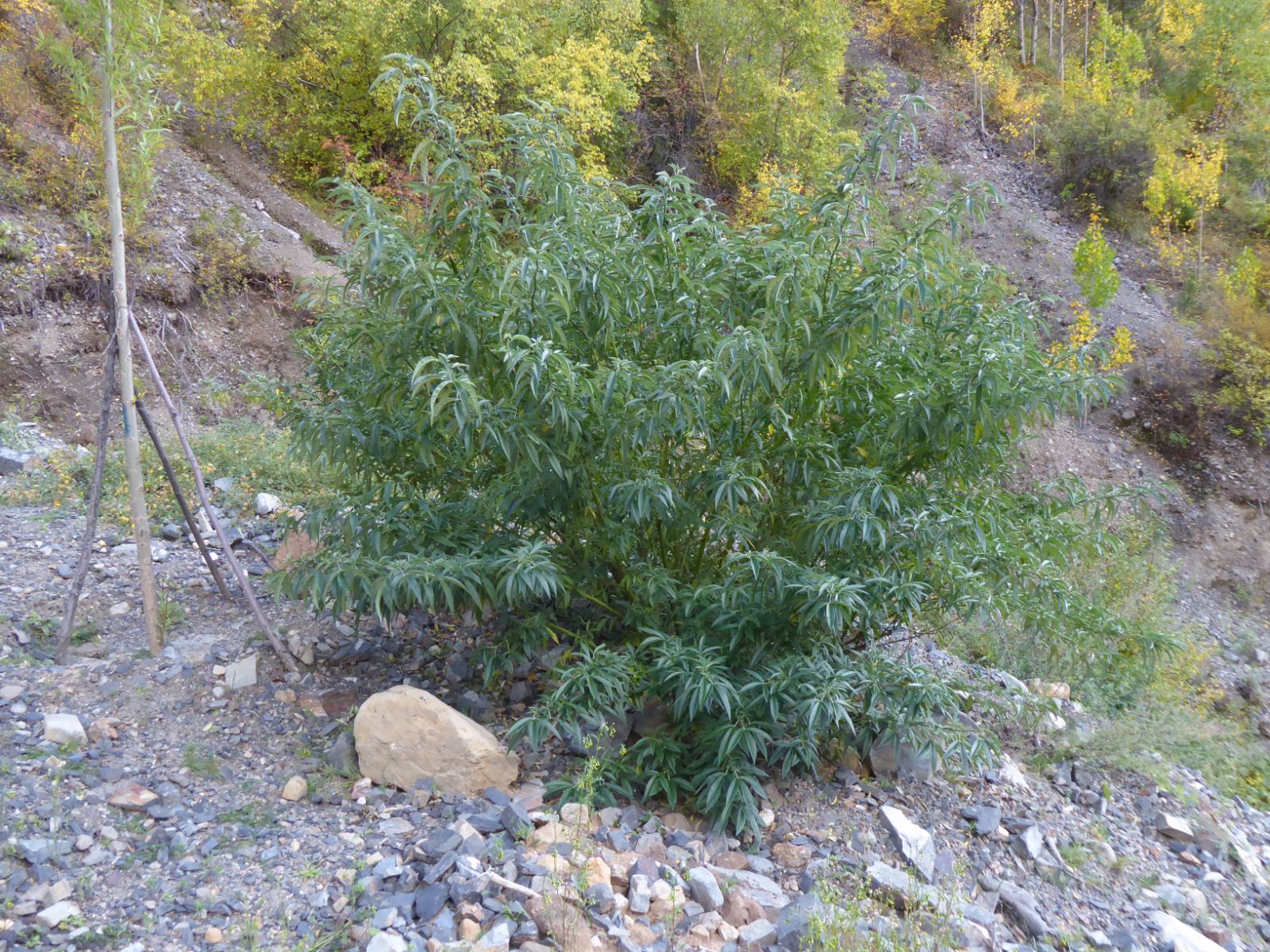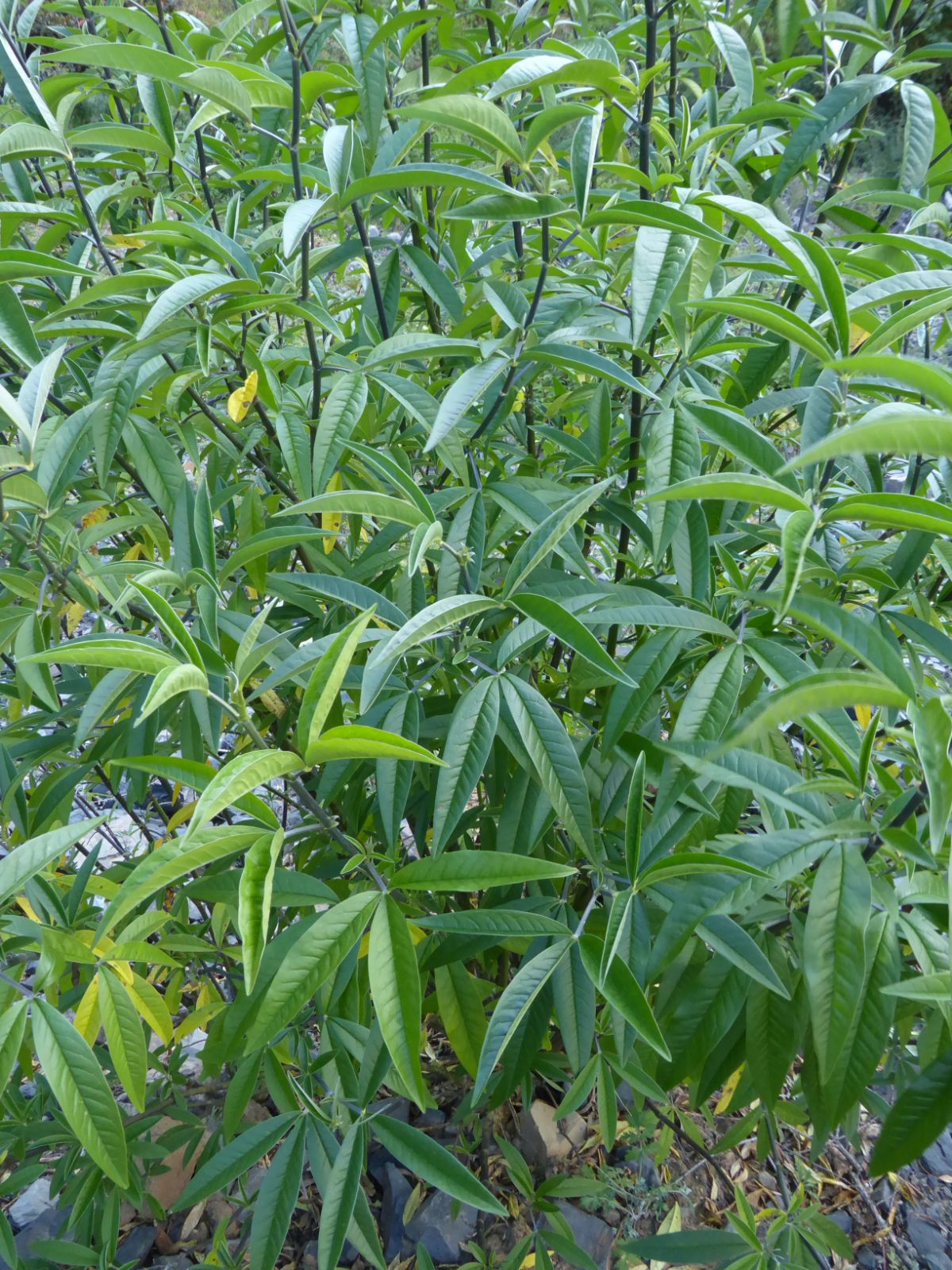Piptanthus laburnifolius
Credits
Article from Bean's Trees and Shrubs Hardy in the British Isles
Recommended citation
'Piptanthus laburnifolius' from the website Trees and Shrubs Online (treesandshrubsonline.
Genus
Synonyms
- Thermopsis laburnifolia D. Don
- Piptanthus nepalensis Sweet
A shrub or low tree with very pithy young shoots; naturally 8 to 12 ft high, but growing taller against walls, where it is generally placed in England. When grown at Kew it is deciduous, but in milder climates it retains more or less foliage during the winter. Leaves alternate, consisting of three lanceolate, stalkless leaflets, 3 to 6 in. long, about one-third as wide, with a marginal nerve, glabrous except when quite young, dark green above, glaucous beneath; the common leaf-stalk 11⁄2 to 2 in. long. Racemes stiff, erect, 2 to 3 in. long, and as much broad, hairy, and set with hairy bracts. Flowers pea-shaped, 11⁄2 in. long, the stalk up to 1 in. long and, like the bell-shaped, deeply lobed calyx, very hairy; petals bright yellow. Pods 3 to 5 in. long, 3⁄4 in. wide.
Native of the Himalaya; introduced to England in 1821. It thrives well against a wall, flowering in May, but is not permanently hardy in the open air at Kew. A shrub of exceptionally vigorous appearance, it is, nevertheless, not long-lived. It is easily propagated by seeds, which it ripens in quantity, and owing to its dislike of root disturbance should be grown in pots until planted in permanence.
From the Supplement (Vol. V)
The correct name for this species is P. nepalensis (see below).

